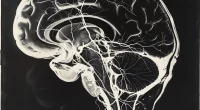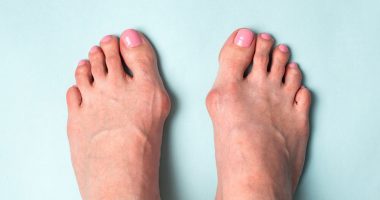Atherosclerosis
What’s that?
Atherosclerosis is the most common chronic disease of arteries of elastic (aorta and its branches) and muscular-elastic (arteries of the heart, brain, etc.) type, with the formation of single and multiple foci of lipid, mainly cholesterol deposits – atheromatous plaques – in the inner lining.
Subsequent overgrowths of connective tissue and calcinosis of the vessel wall lead to slowly progressive deformation and narrowing of its lumen up to complete obliteration of the artery and thus cause chronic, slowly increasing insufficiency of blood supply to the organ fed through the affected artery.
About the disease
Atherosclerosis occurs with the highest frequency in adult men aged 50-60 years and in women over 60 years. Today, the prevalence of this disease is very high, especially in developed countries. For many years, it is cardiovascular diseases are the most frequent cause of death worldwide. They are ahead of infections, injuries, and malignant tumors.
Types of atherosclerosis
Atherosclerosis is a disease with many manifestations and clinical forms. Classification is based primarily on the localization of the pathological process. The following types of atherosclerosis are distinguished:
- coronary artery atherosclerosis (causes various types of coronary heart disease);
- brachiocephalic artery atherosclerosis (causes acute and chronic disorders of cerebral circulation);
- aortic lesion;
- atherosclerosis of the iliac arteries;
- atherosclerosis of the vessels of the lower extremities;
- atherosclerosis of visceral branches of the aorta (causes disorders of the kidneys, intestines, etc.);
- multifocal lesion (pathologic process involves several groups of vessels at once).
Depending on the degree of blockage of the vessel lumen and the severity of symptoms, two stages of atherosclerosis are distinguished:
- subclinical: pathological processes in the vascular wall are already underway, but there are no apparent signs of the disease;
- clinical (symptomatic): there are some symptoms of the disease; as a rule, it develops when the vessel lumen is blocked by 50% or more.
Symptoms of atherosclerosis
Signs of atherosclerosis depend on the localization of the affected vessel and the quality of blood supply to the organ. The less blood is supplied to the tissues, the more noticeable the symptoms of oxygen starvation are. The course of most forms of the disease, starting from the appearance of the first signs, can be divided into three stages:
- ischemia stage: manifested by gradual deterioration of the organ function, specific pain, which first occurs on exertion, and then at rest;
- thrombotic-necrotic stage: occurs when there is an abrupt cessation of blood supply (usually against the background of concomitant thrombosis), characterized by infarction of the organ or its area;
- fibrotic stage: dead areas are replaced by scar tissue, which can no longer perform its functions.
Coronary atherosclerosis
This form of the disease runs in the form of ischemic heart disease. As a rule, initially, patients face angina pectoris – specific chest pains against the background of physical activity. Gradually, the ability of the heart to adequately work in an intensified mode decreases, and tolerance to load decreases. As a result, pain occurs in a relatively calm state, lasts longer, and is worse managed. With an abrupt cessation of blood supply, myocardial infarction develops. In this case, the patient experiences severe, burning pain behind the sternum, on the left side of the chest, less often in the back or upper abdomen. In the absence of medical care, death may occur.
Atherosclerosis of the aorta and its branches, as well as vessels supplying internal organs
The aorta can be affected in both thoracic and abdominal regions. In the first case, the patient complains of tearing pains behind the sternum, which, unlike angina pectoris, are not associated with physical activity. When the abdominal section is affected, the blood supply of the lower extremities may suffer. The patient complains of numbness of tissues, leg pain, and claudication, which increases when walking (intermittent claudication). Similar symptoms occur when the arteries of the lower limbs are affected.
Atherosclerosis of cerebral vessels
Lesions of the cerebral vessels lead to disorders of sensory and/or motor functions and higher nervous activity. The patient may complain of a gradual decrease in sensation or muscle weakness, decreased visual or hearing acuity, frequent headaches, or dizziness. Some people have a marked deterioration of memory; they become scattered. In acute cerebral circulatory failure, a stroke develops.
Atherosclerosis of the arteries of the lower extremities
Lesions of the vessels of the lower extremities are always accompanied by intermittent claudication, as well as pain in the calf muscles, the chilliness of the legs, and numbness. As the disease progresses, the patient notices the pallor of the skin and its increased dryness. In the absence of treatment, there is a risk of developing trophic ulcers and gangrene.
Causes of the development of atherosclerosis
Atherosclerosis is a multifactorial disease. It is impossible to identify the exact cause of its development. There is no doubt about the importance of the so-called risk factors for atherosclerosis.
Some of them are non-modifiable:
- age,
- male sex,
- family history of atherosclerosis.
Others are quite modifiable:
- arterial hypertension,
- nutritional obesity,
- smoking cigarettes.
Others are partially (potentially) avoidable:
- various types of hyperlipidemia,
- diabetes mellitus,
- high-density lipoprotein levels.
Risk factors include insufficient physical activity, excessive emotional stress, and personal characteristics. Counteracting the above risk factors or entirely or partially eliminating avoidable factors forms the basis for preventing atherosclerosis.
Diagnosis of atherosclerosis
Diagnosis begins with a thorough interview of the patient. The doctor pays attention to the main complaints, their relationship to physical activity, reaction to rest, and/or nitroglycerin administration. When collecting a life history, questions about lifestyle, dietary habits, and heredity are asked. During a general examination, the doctor pays attention to the pulse rate, blood pressure, features of heart tones, pulsation of peripheral arteries, color and temperature of the extremities, etc. To confirm the diagnosis, objective methods are used:
- ECG, Holter monitoring, exercise tests (treadmill test, bicycle ergometry);
- Ultrasound of the heart, kidneys, renal arteries, arteries of the lower extremities, cerebral vessels, and neck vessels;
- Coronarography, aortography, and other types of angiography (X-ray examination of blood vessels with preliminary injection of contrast agent);
- MRI of the abdominal organs, brain, etc.;
- Laboratory diagnostics: general blood and urine tests, biochemical blood tests to assess the lipid spectrum, etc.
Depending on the localization of the affected arteries, specialists of the appropriate profile are involved in the diagnosis: vascular surgeons, neurologists, gastroenterologists, etc.
Treatment of atherosclerosis
At the initial stages of development, when symptoms are minimal, the treatment of vascular atherosclerosis is carried out conservatively. The correction of lifestyle comes to the forefront:
- regular physical activity commensurate with the age and physical capabilities of the patient; dosage of exercises, especially in the case of targeted training of the most affected organ;
- rational diet with a predominant share of fats of vegetable origin in the total fat content, enriched with vitamins and excluding weight gain;
- in case of excessive body weight – its persistent reduction to the optimal level;
- control of stool regularity; periodic administration of a salt laxative is possible (partly to evacuate cholesterol excreted in the intestine with bile);
- systematic treatment of concomitant diseases, especially arterial hypertension and diabetes mellitus.
If these methods are not effective enough, drug therapy is prescribed to reduce the cholesterol level in the blood. In attacks of ischemia (angina pectoris, intermittent claudication, etc.), fast-acting drugs are prescribed to relieve vascular spasms. Antiplatelet agents are used to prevent thrombosis. With pronounced symptoms of one or another form of atherosclerosis, drugs are prescribed to eliminate them.
If there is a high threat of complications, thrombosis, or significant blockage of the lumen of a vital artery, doctors resort to surgical correction methods. Depending on the situation, different intervention tactics are chosen:
- endarterectomy: removal of plaque from vessels by open surgery;
- endovascular operations: catheter insertion into problem arteries with subsequent dilatation and stent placement;
- bypass surgery: creating a new pathway for blood flow to bypass the blocked areas (most commonly, aortocoronary bypass surgery).
All these treatment options are available in more than 900 hospitals worldwide (https://doctor.global/results/diseases/atherosclerosis). For example, Carotid endarterectomy (CEA) is performed in 17 clinics across Turkey for an approximate price of $6.9 K (https://doctor.global/results/asia/turkey/all-cities/all-specializations/procedures/carotid-endarterectomy-cea)
Prevention
Prevention of atherosclerosis is, first of all, a healthy lifestyle. The probability of the appearance of cholesterol plaques in the vessels depends largely on bad habits and dietary habits. Patients need to:
- build a proper diet with moderate amounts of animal fats;
- avoid hypodynamia;
- to keep your body weight under control;
- to stop smoking;
- get regular preventive check-ups.
Rehabilitation
After endovascular surgery, the patient returns to their usual life relatively quickly since the interventions are performed through a small puncture. A person is allowed to stand on their feet on the day of the intervention and, after 3-7 days, can lead an everyday life (the main thing is to consider the limitations imposed by the original disease).
After open surgery, the recovery period ranges from 2 weeks to several months (for open heart interventions). During this period, it is necessary to limit physical activity and gradually increase its intensity. If the intervention is performed on the vessels of the lower extremities, special compression stockings or bandages are also required. A general restriction is prohibiting heat procedures, visiting tanning salons, and staying under direct sunlight.




